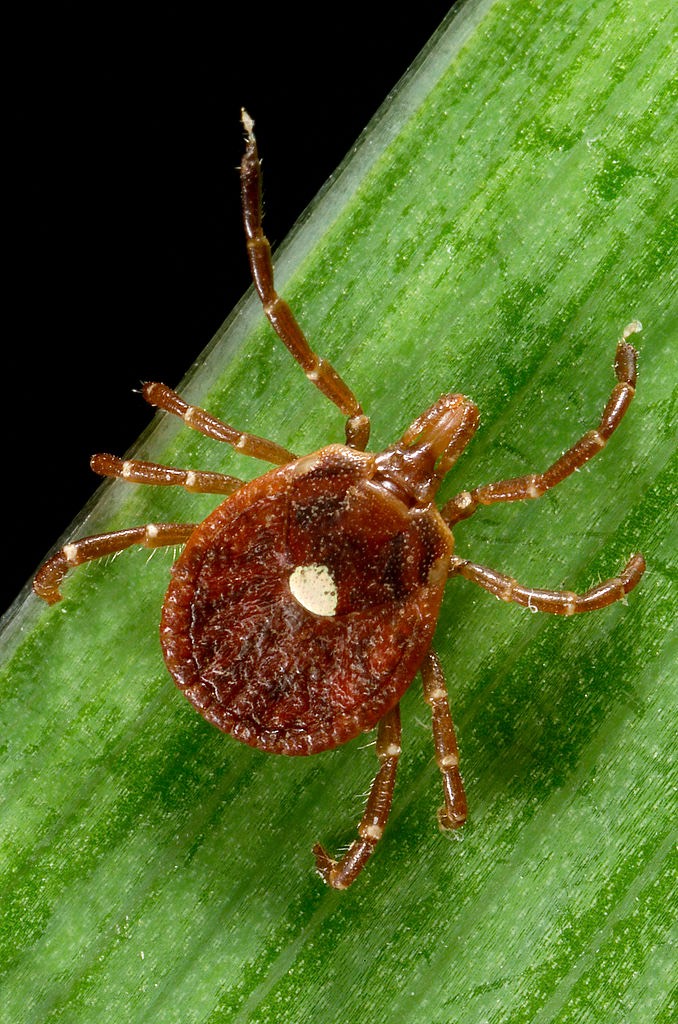
An ixodid or “hard” tick, Amblyomma americanum is found through the eastern and south-central states and can transmit disease agents that affect humans, dogs, goats, and white-tailed deer. Representatives from all three of its life stages aggressively bite people in the southern U.S.
Lone star ticks transmit Ehrlichia chaffeensis and Ehrlichia ewingii, both of which cause disease. Borrelia lonestari, a pathogen associated with “Southern Tick-Associated Rash Illness” (STARI), also infects lone star ticks. Research suggests that up to 10% of the lone star ticks in an endemic area can be infected with any one of these pathogens. These ticks also are infected with a spotted-fever group Rickettsia, “Rickettsia amblyommii” but it is unknown at this time if this bacterium causes disease.
The obvious white dot, or “lone star”, identifies an adult female of the species.

Lone Star Tick - Amblyomma americanum
Recent studies also appear to link the Lone Star tick with the rare Heartland virus (HRTV).
Map of the range of the Lone Star Tick (Amblyomma americanum). Red indicates where the species is normally found; Blue indicates other locations where the species has been reported.
